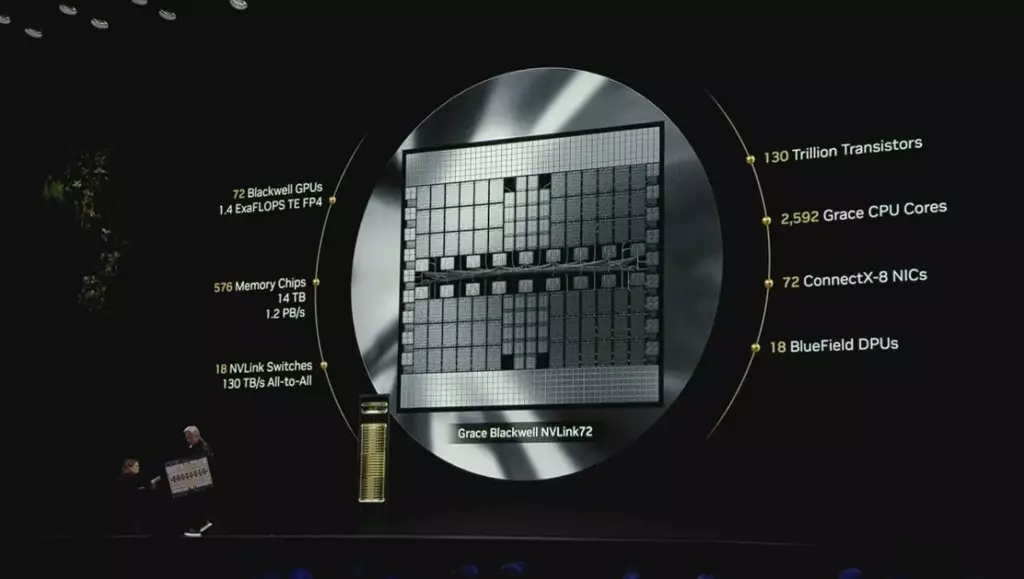In a dramatic pivot, President Donald Trump has stepped back from implementing sweeping tariffs on electronics, a decision that could resonate throughout the U.S. economy and technology landscape. The reversal emerged within the context of a customs document released by U.S. Customs and Border Protection, which exempted certain consumer electronics—predominantly manufactured in China—from previously imposed tariffs. This pivotal development signals an understanding that excessive tariffs could stifle innovation and consumer spending in the tech sector, a move that aligns more closely with expert consensus on technology economic policy.
Trump’s decision to remove tariffs specifically on semiconductors—vital components of virtually every electronic device—underlines a calculated attempt to maintain essential supply chains. However, uncertainty lingers around the potential repercussions of this decision on investor confidence amidst an unpredictable trade atmosphere. Since Trump’s entrance into office, the stock market has seen a troubling downslide of 15%, raising concerns that such market volatility could persist despite the easing of tariff pressures.
The Cost of Tariffs on Innovation
The implications of tariff policies extend far beyond abstract economics; they hit at the very heart of innovation and technological advancement. Analysts have warned that imposing tariffs would dramatically inflate consumer prices—estimates indicate that game consoles could see price increases of up to 40%, while smartphones and laptops might experience inflation of 26% and 46%, respectively. These alarming figures showcase how tariff decisions could directly affect everyday consumers and hinder the broader push for technological accessibility.
Importantly, the suggestion that electronics manufacturing could be relocated back to the U.S. is oversimplified. For example, a famed tech analyst pointed out that should an iPhone be manufactured domestically, the price tag might surge from around $1,000 to a staggering $3,500. Such hypotheticals aside, the reality is that the U.S. capacity for producing advanced technology remains limited; it possesses merely 14% of the global semiconductor market, a figure that suggests the challenges of reclaiming manufacturing sovereignty.
The Long Game: Rebuilding Semiconductor Dominance
The current administration’s rhetoric around reshaping the semiconductor industry overlooks a critical truth: the battle to regain market share is a long-term endeavor requiring more than merely turning tariffs on or off. A prominent consulting expert noted that restoring the U.S. to a leading position in chip production won’t happen overnight; it involves an intricate interplay of securing investments, rebuilding infrastructure, and prioritizing research and development.
While recent legislation, such as the bipartisan U.S. Chips and Science Act, aims to bolster domestic semiconductor production, investment dollars alone will not alleviate the challenges of reestablishing a competitive edge in this field. Building state-of-the-art manufacturing facilities is a monumental undertaking; projections suggest that even with federal backing, U.S. chip production may only rise from 10% to approximately 14% by 2032—a modest gain illustrating the uphill battle ahead.
Complex Supply Chains and Global Competition
Further complicating the landscape is the intricate nature of global supply chains. The history of U.S. semiconductor excellence—largely epitomized by Intel—reveals an industry that once thrived due to superior manufacturing capabilities. However, complacency in innovation allowed competitors, notably Nvidia, to surge ahead by leveraging leading-edge fabrication facilities like those operated by Taiwan Semiconductor Manufacturing Company (TSMC). This underscores the fact that manufacturing alone is insufficient for success; innovation often takes precedence.
As the tech sector grapples with the white-hot competition from countries like China, which produces a significant number of engineering graduates annually, the U.S. finds itself in a precarious position. The current approach from the Trump administration may not resonate with the fundamental challenges of talent development and technical education necessary to cultivate a robust workforce.
While politicians express concern over alleged lobbying power from tech giants, the high-value employment opportunities generated by this sector argue for a reevaluation of priorities. Building a competitive edge requires investments in education and training while harnessing innovation. The push for domestic manufacturing will only bear fruit if accompanied by a commitment to enhancing the domestic talent pool and fostering an environment that prioritizes science and technology education.
The Path Forward: A Delicate Balancing Act
President Trump’s administration firmly portrays the focus on tariffs as an initiative to decrease dependence on foreign technology. Such assertions may resonate within certain voter segments, but the intricate reality demands a more nuanced solution. Tariffs are not a panacea—rather, they could exacerbate existing issues while failing to catalyze substantive change in the way technology is developed and manufactured in the U.S.
The true challenge lies in finding equilibrium—the delicate balance between ensuring national competitiveness and maintaining a thriving local tech ecosystem. Such a strategy necessitates dynamic policies that facilitate collaboration between government, corporations, and educational institutions. If the U.S. is to reclaim its place as a leader in technology, a forward-thinking approach that embraces innovation, education, and smart economic strategies will be crucial.

